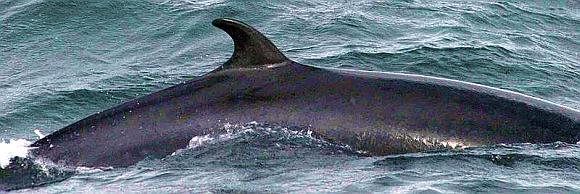 For roughly fifty years, scientists have listened to an unidentified sound in the Southern Ocean, which has been described as a sort of mechanical quacking noise. It has been come to be known as the bio-duck. The bio-duck quack was first detected by sonar operators on Oberon class submarines in the 1960s. There had been speculation that the sound was from other submarines, from fish or Now new research has revealed that the bio-duck quack is made by the Antarctic minke whale.
For roughly fifty years, scientists have listened to an unidentified sound in the Southern Ocean, which has been described as a sort of mechanical quacking noise. It has been come to be known as the bio-duck. The bio-duck quack was first detected by sonar operators on Oberon class submarines in the 1960s. There had been speculation that the sound was from other submarines, from fish or Now new research has revealed that the bio-duck quack is made by the Antarctic minke whale.
In February 2013, an international team of researchers led by Denise Risch of NOAA’s Northeast Fisheries Science Center (NEFSC), successfully secured suction-cupped recording devices on two Antarctic minke whales in Wilhelmina Bay off the western Antarctic Peninsula. These devices were the first acoustic sensors successfully used on minke whales.
Mysterious Duck-like Sound Source Revealed
As reported by Physics.org: Putting sensors on minke whales is not easy—they’re fast and turn on a dime. Thus it was a bit of a triumph that the team was able to manage to do so. The sensors they used were quite sophisticated, yet small—they capture and record not only sound, but water depth and movements in 360 degrees—plus, they don’t cause harm, they’re held on by suction cups. A sensor on one of the whales gave away the secret of bio-duck sounds—capturing the distinctive bio-duck noise, repeating several times as the whale was near the surface. The recordings were compared to prior recordings of bio-duck sounds made by researchers aboard submarines and were found to match, solving the mystery of the bio-duck sounds.
One reason that minke whales had not been suspected to be the bio-duck was that the quack was heard in southern waters in the wintertime. Minke whales were thought to migrate north in the winter. This new research demonstrates that not all minke whales migrate. A certain percentage stay in the southern ice fields.
Also from Physics.org: The researchers note that solving the mystery is more than fanciful, now that the source is known, researchers can use recording equipment to track their migration, feeding patterns or even the reproduction cycles of the whales, offering the possibility of a whole new research area. Research on the minke whales is particularly important for two reasons. One is that they are a primary target of Japanese whalers, the other is because of where they live—a part of the ocean undergoing transformation due to global warming.
It is telling that the Japanese have justified the hunting of minke whales as “research” while yielded no significant new data about the whales or their habitat, whereas the use of non-harmful sensors has solved a half century old mystery in a few month’s time.
The study, Mysterious bio-duck sound attributed to the Antarctic minke whale (Balaenoptera bonaerensis) was published in the Royal Society’s Biology Letters.
